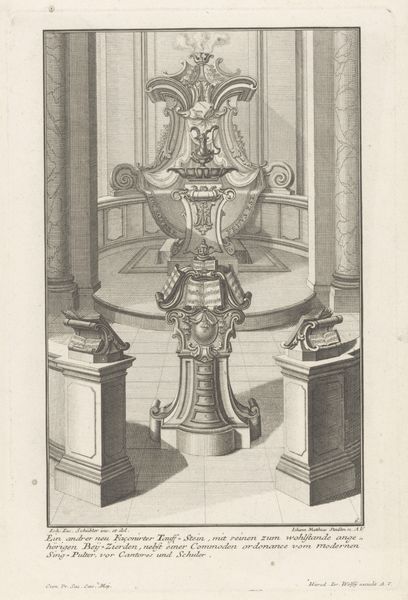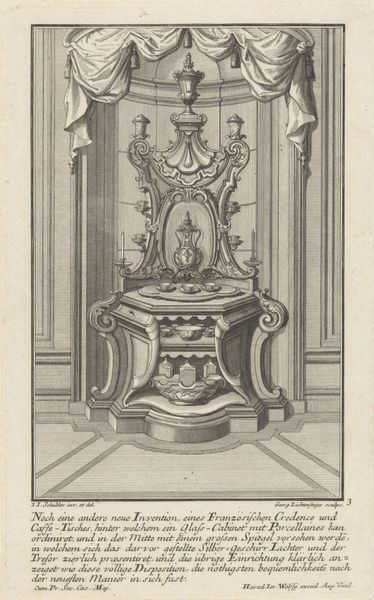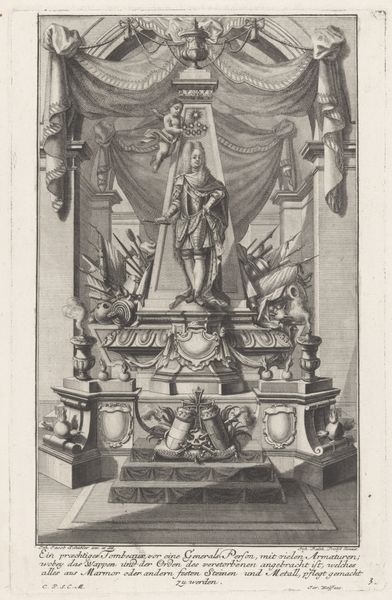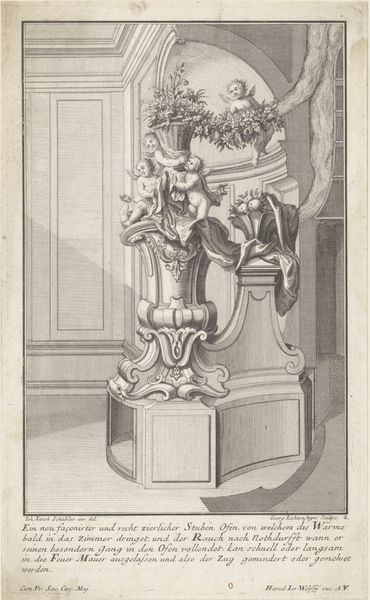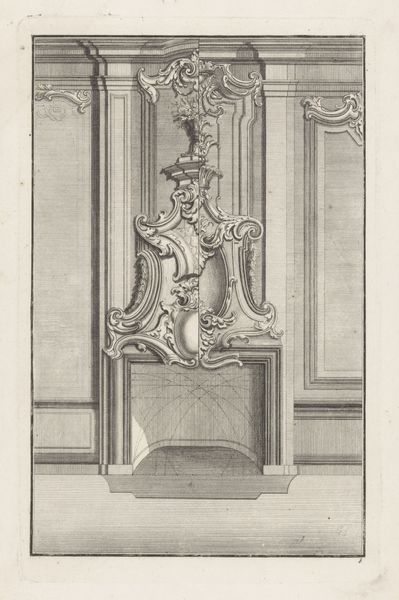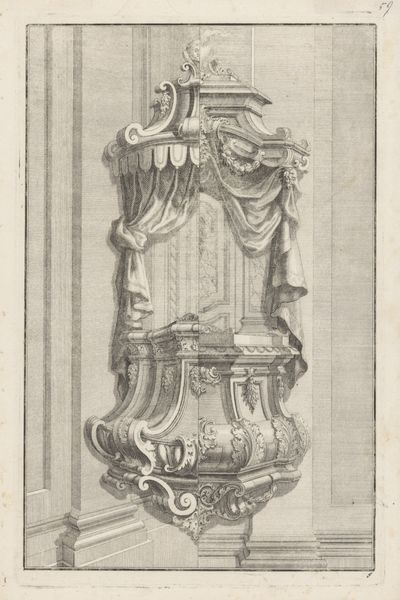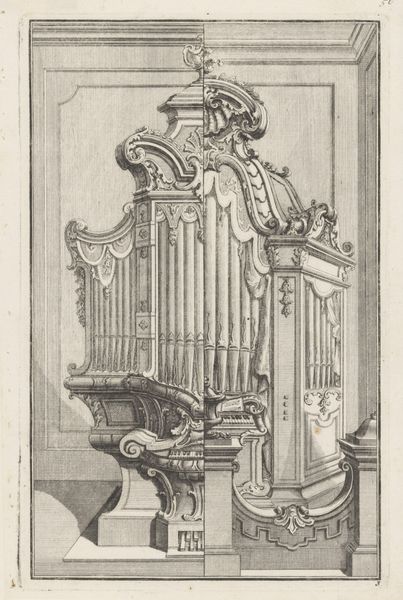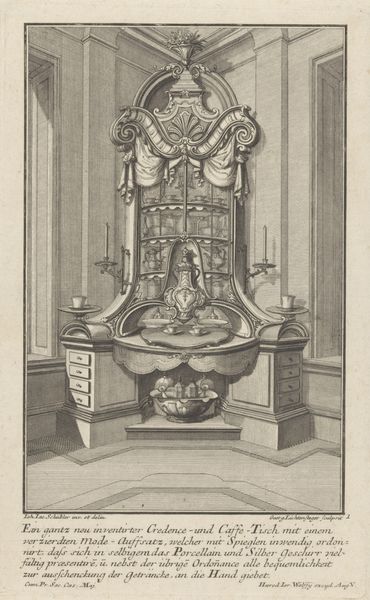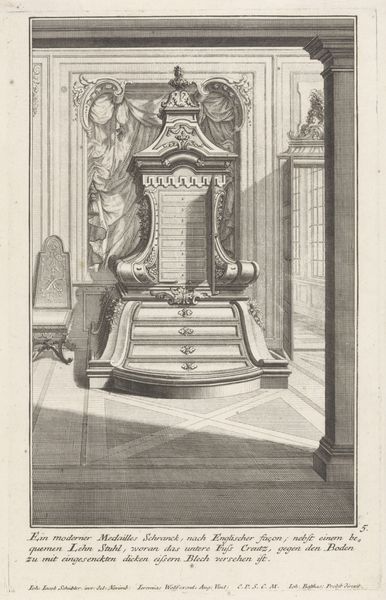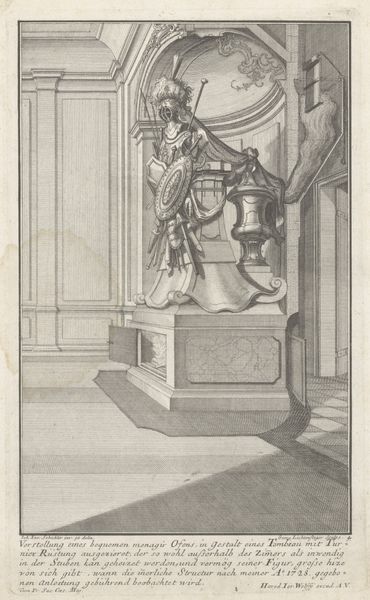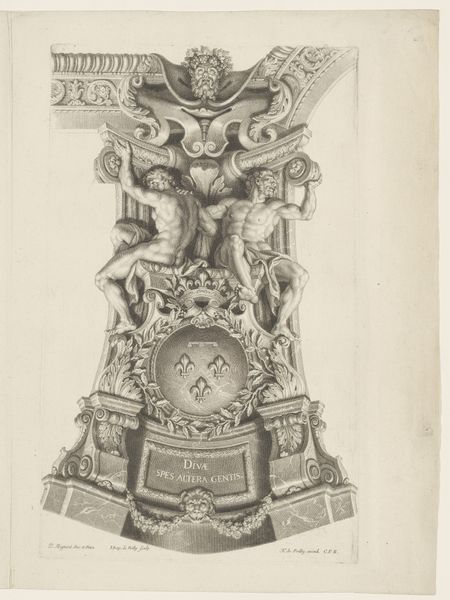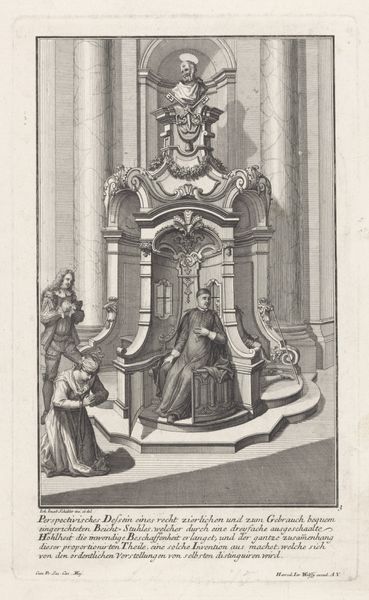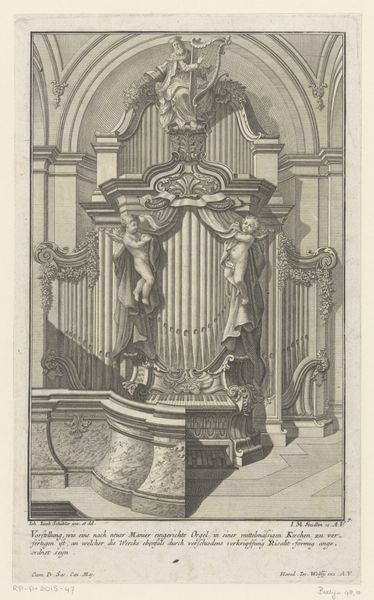
drawing, print, engraving
#
drawing
#
aged paper
#
baroque
# print
#
old engraving style
#
engraving
Dimensions: height 300 mm, width 193 mm
Copyright: Rijks Museum: Open Domain
Editor: This engraving, titled "Toilettafel" by Johann Balthasar Probst, was created sometime between 1709 and 1724. It depicts an ornate dressing table. The incredible detail achieved with engraving is really striking. I'm immediately drawn to the symmetry and how it dominates the overall feel. What do you see in this piece from a formalist perspective? Curator: The success of this engraving lies indeed in its exploitation of line. Notice how the composition adheres to a strict, almost diagrammatic structure. The vertical stripes in the background play against the curvilinear elements of the table itself, creating a push and pull within the pictorial space. Look closely at how the engraving technique renders texture, from the smooth surfaces to the fabric’s delicate folds. It provides visual depth with only monochrome gradients. Do you agree with this interpretation? Editor: I do see how the contrast highlights the lines and textures. It’s interesting how the flatness of the print, combined with the illusion of depth, creates a certain tension in the image. I didn't pick up on that initially. It is a constant movement in the lines between a two-dimensional geometrical exercise versus depth using shadow to trick the eye. Curator: Precisely! The mirroring effect, not just in the literal mirror depicted, but in the repetition of shapes and forms, contributes to a sense of balance, reinforcing the structured and considered approach to design typical of the Baroque. There's also something interesting about the lack of any human presence, directing our focus to the object itself. Editor: This has given me a new appreciation for the formal elements at play. Focusing on these core design principles has shifted my attention from the scene depicted to how the artwork functions as a composition. Thanks! Curator: And for me as well. Considering the role of absence within such meticulous construction adds another layer of complexity.
Comments
No comments
Be the first to comment and join the conversation on the ultimate creative platform.
